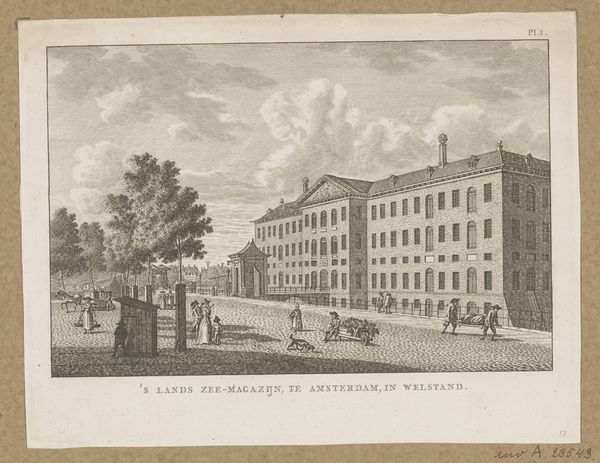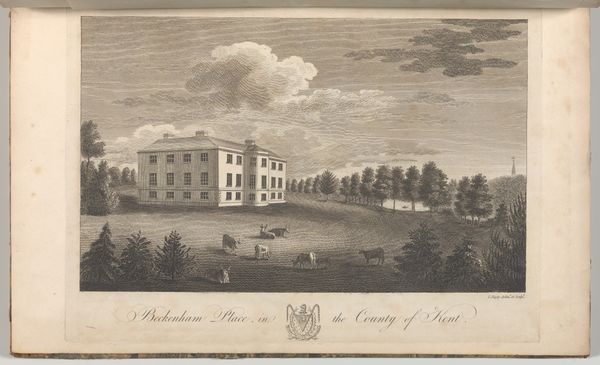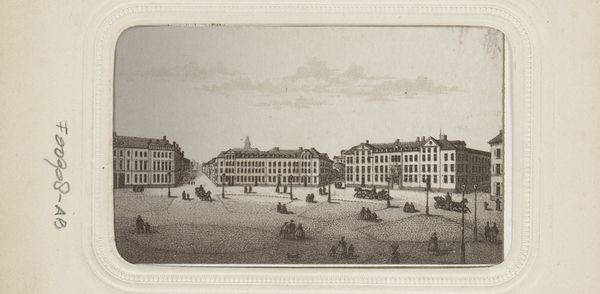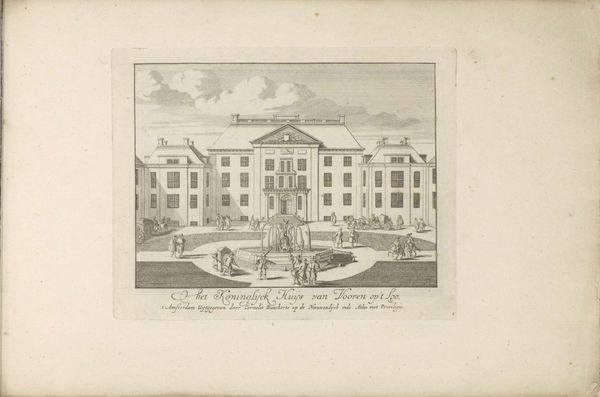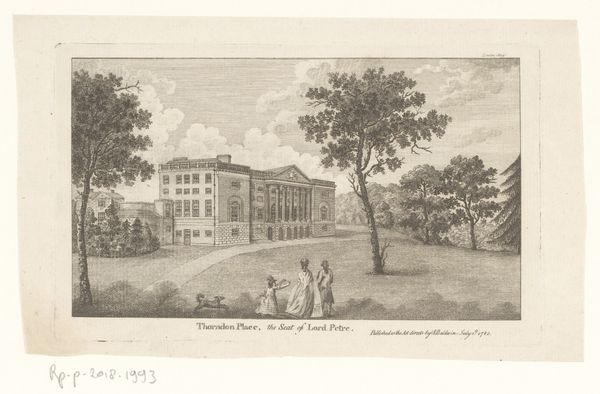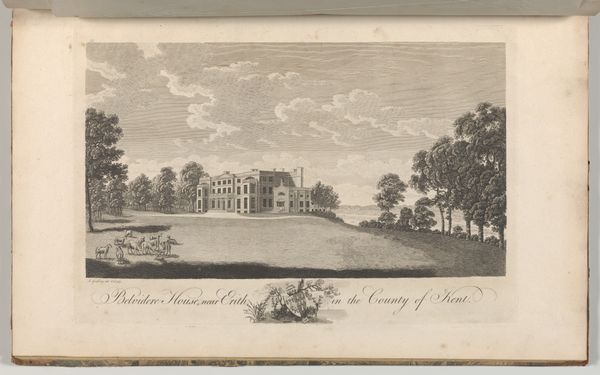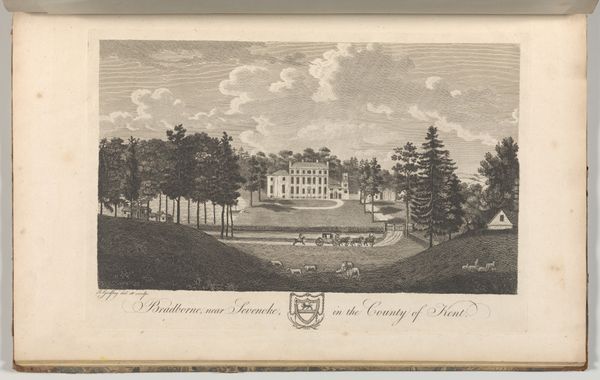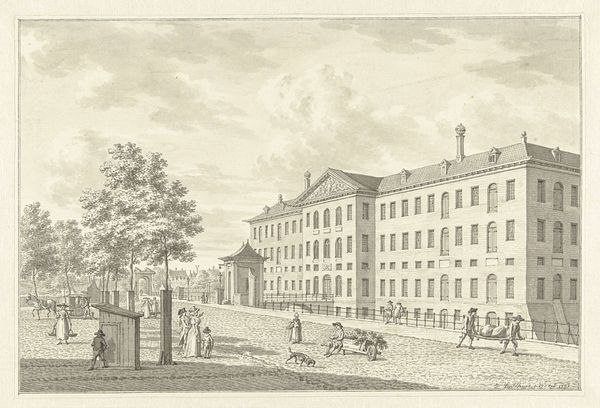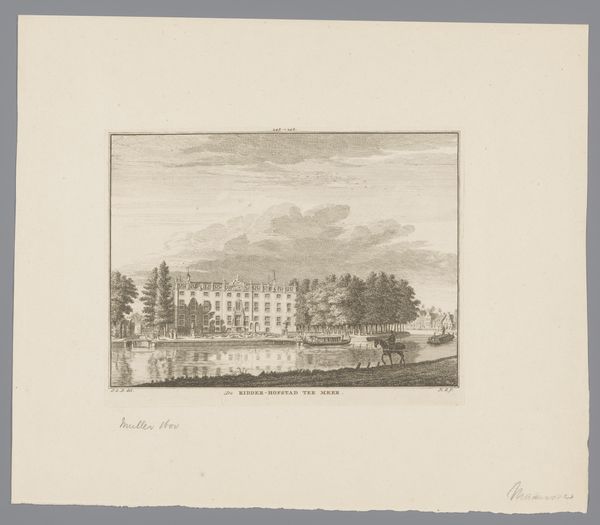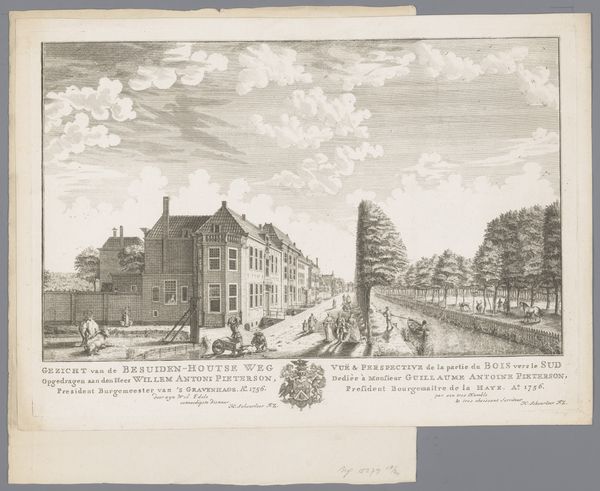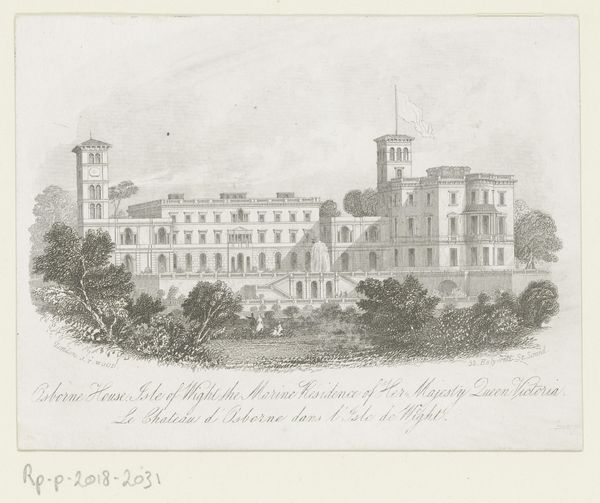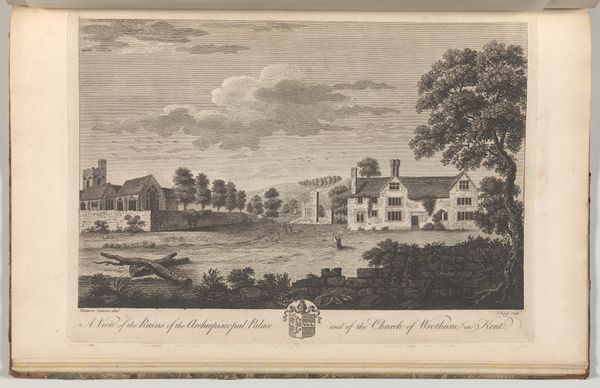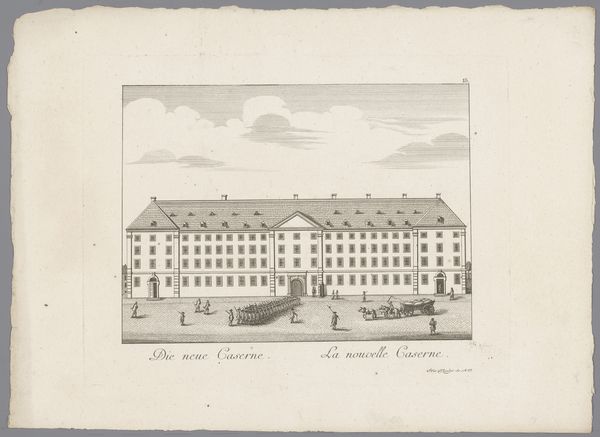
Cobham Hall in the County of Kent, from The History and Topographical Survey of the County of Kent, vols. 1-3 1777 - 1790
0:00
0:00
drawing, print, etching, engraving
#
drawing
#
neoclacissism
#
aged paper
#
toned paper
#
light pencil work
#
ink paper printed
# print
#
etching
#
book
#
landscape
#
personal sketchbook
#
history-painting
#
engraving
#
building
Dimensions: Book: 17 5/16 × 11 × 13/16 in. (44 × 28 × 2 cm) Sheet: 16 15/16 × 10 5/8 in. (43 × 27 cm) Plate: 10 1/16 × 14 in. (25.5 × 35.5 cm)
Copyright: Public Domain
Curator: Oh, look at this one! It feels like stepping into a Jane Austen novel, all gentility and whispered secrets among the trees. Editor: Indeed. What strikes me is the rigorous formalism embedded within its seemingly simple design. This etching, part of "The History and Topographical Survey of the County of Kent," meticulously renders Cobham Hall, a feat achieved between 1777 and 1790 by John Bayly. Note the architectural precision and calculated symmetry. Curator: Symmetry's a bit of an understatement, isn't it? Almost feels too… planned. But I suppose that was the point. It gives this feeling of control and order. Is this neoclassical perhaps? Editor: Precisely. We can see echoes of neoclassical ideals – balance, restraint, and a harking back to classical antiquity are prominent. The even distribution of light, the unwavering perspective… Curator: ...Which almost makes it feel… distant, doesn't it? Like a stage set. And those towering trees, framing the scene…almost too perfect, too placed. Almost oppressive to think it lives within the pages of a book, like it’s archived instead of inhabited. Editor: That placement is indeed strategic, guiding the eye towards the focal point: the hall itself. The artist plays with the planar recession to deepen our view into the estate and assert architectural command. It is not simply an illustration, but an exercise in spatial manipulation, loaded with geometric intention. Curator: True. Even the way the light etches out the building...almost makes you think this is the most important thing happening, as if the people that are suggested to be inside it, the actual life of the space, isn't worth seeing. It's there for power. Funny that even this medium of book print makes it inaccessible. Editor: Absolutely. The book context elevates the image, as an informational object meant for the privileged few, thus embodying the very themes it represents: class and access to material comforts and knowledge. Its beauty and the precision, create not only something pleasing but something with embedded historic ideologies. Curator: Which is a nice reminder that even pretty pictures have stories bubbling beneath. It’s a formal portrait of an era, but the mood almost reveals an unconscious story as well, something caught in its symmetries. Editor: It’s a testament to art's multilayered language, indeed. Every choice speaks, every stroke reveals a cultural context worth uncovering, especially for an attentive eye.
Comments
No comments
Be the first to comment and join the conversation on the ultimate creative platform.
